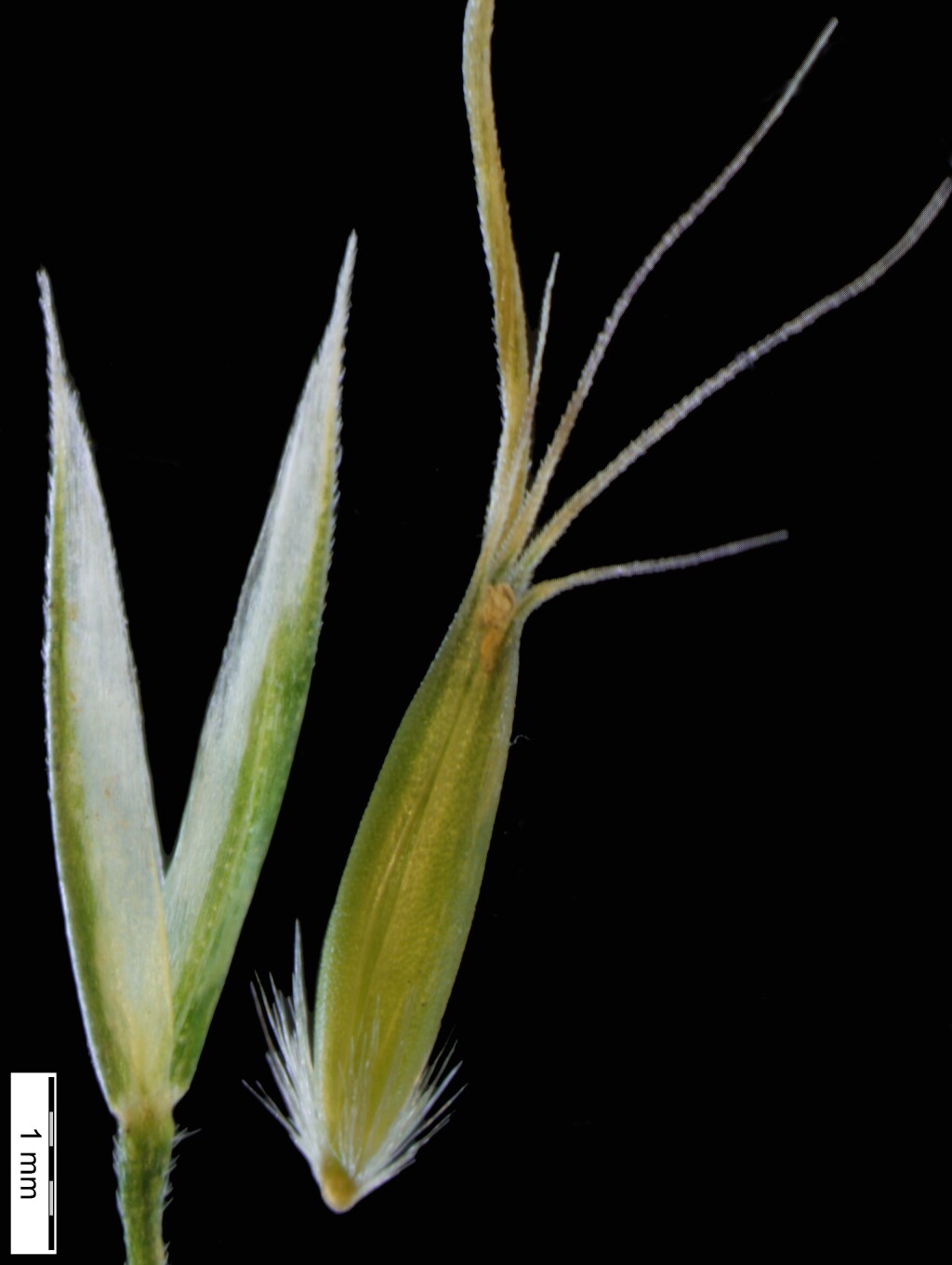Pentapogon
Tufted perennial or annual; inflorescence a panicle. Spikelets 1-flowered; glumes 2, persistent; lemma 2-lobed at apex, with a strong, twisted central awn and two weaker awns either side, glabrous except for the tufted callus hairs.
An endemic, monotypic Australian genus.
Pentapogon has recently been expanded to include some closely related species of Deyeuxia (i.e. D. densa, D. frigida, D. gunniana and D. quadriseta) and all Victorian species of Dichelachne (Peterson et al. 2021). Under the new circumscription Pentapogon can be defined based on the following shared character states: single-flowered spikelets with 5-veined, coriaceous lemmas with a central awn arising just below the apex to dorsally inserted, and 1-veined, membranous glumes. However, there are many other Deyeuxia and Dichelachne species that have not been sampled in the molecular analyses and for this reason Peterson et al. (2021) did not have new combinations made in Pentapogon. We are not following Peterson et al. (2021) at the current time because of the inconsistency of some Deyeuxia and some Dichelachne species remaining in those genera while their putative close relatives that have been sampled in molecular studies have been transferred to Pentapogon.
Peterson, P.M., Soreng, R.J., Romaschenko, K., Barbera, P., Quintanar, A., Aedo , C. & Saarela, J.M. (2021). Phylogeny and biogeography of Calamagrostis (Poaceae: Pooideae: Poeae: Agrostidinae), description of a new genus, Condilorachia (Calothecinae), and expansion of Greeneochloa and Pentapogon (Echinopogoninae). Journal of Systematics and Evolution 60(3): 570-590.
Walsh, N.G. (1994). Poaceae. In: Walsh, N.G.; Entwisle, T.J., Flora of Victoria Vol. 2, Ferns and Allied Plants, Conifers and Monocotyledons, pp. 356–627. Inkata Press, Melbourne.
 Spinning
Spinning



